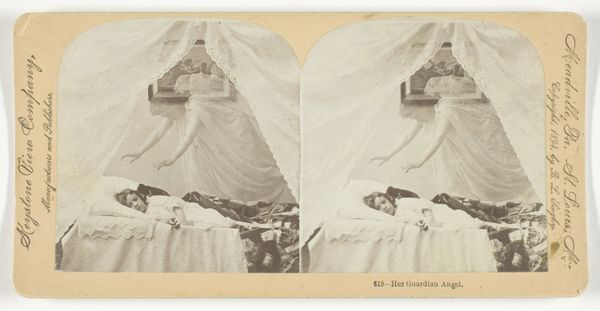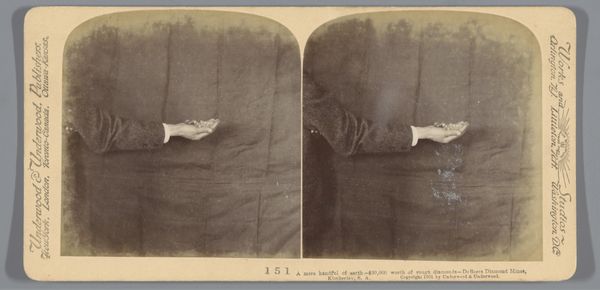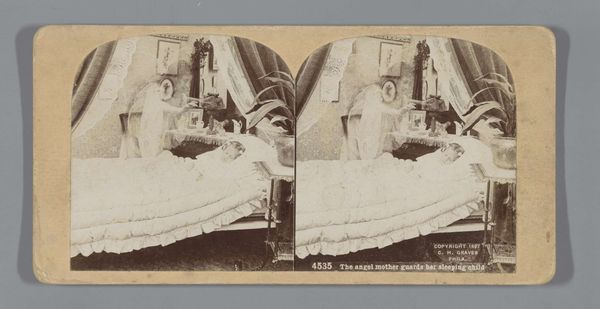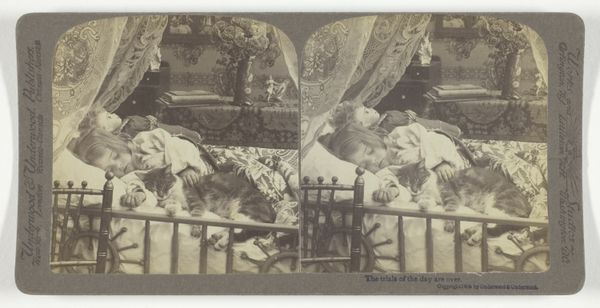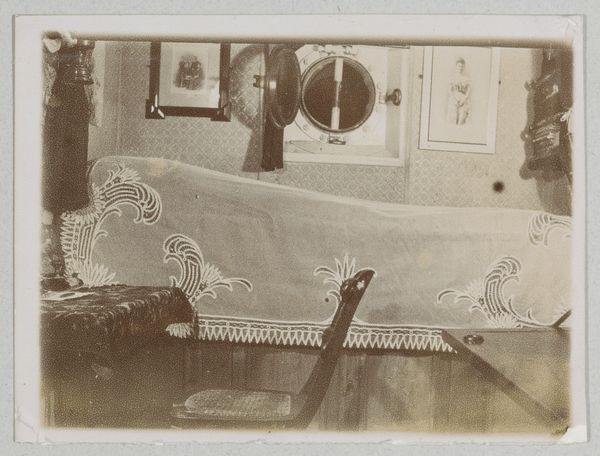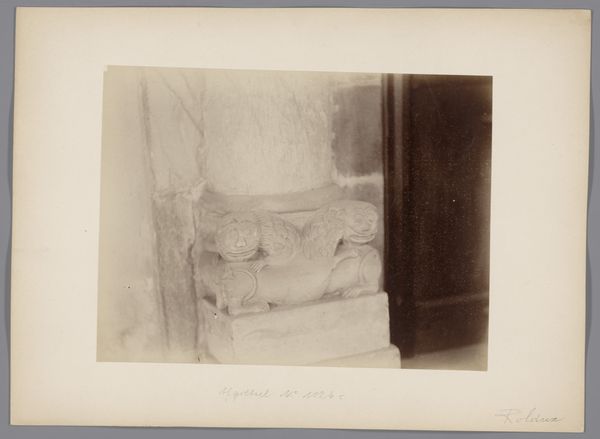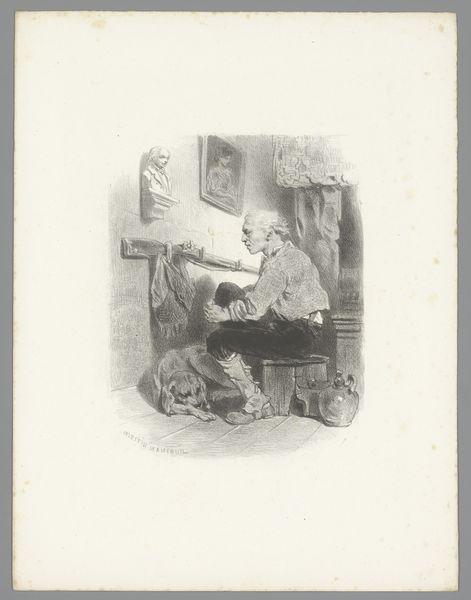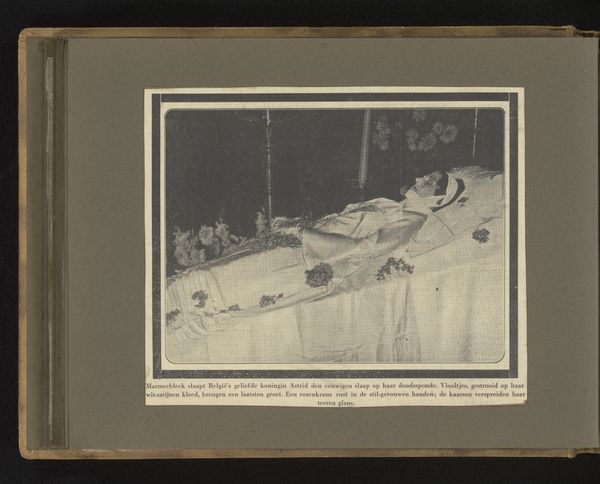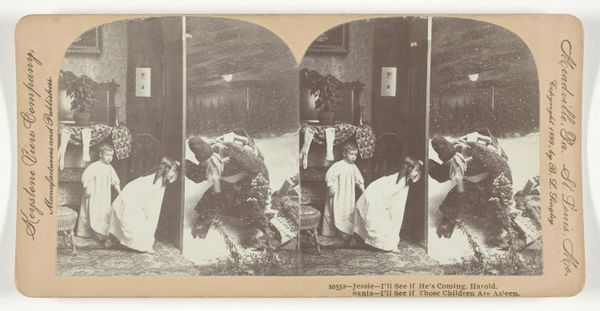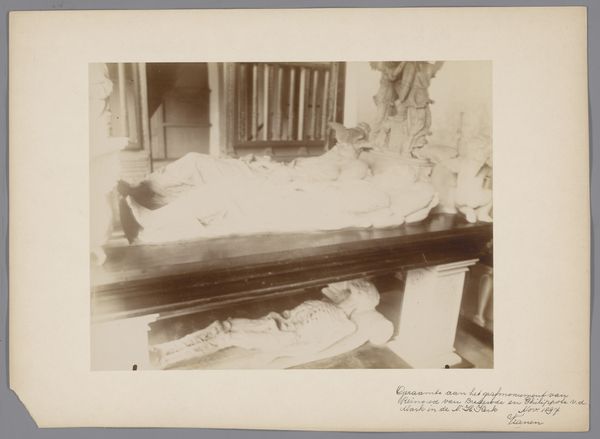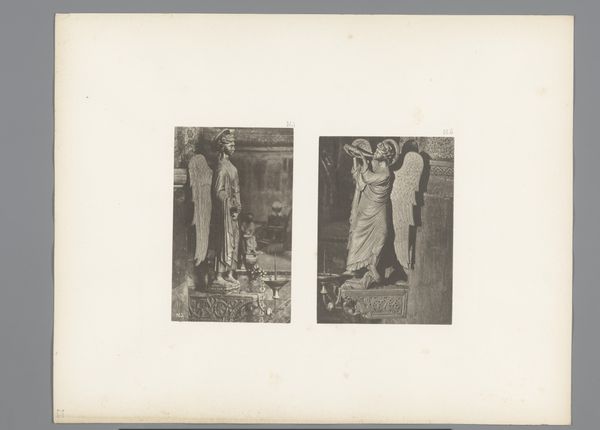
bronze, sculpture
#
bronze
#
figuration
#
sculpture
#
history-painting
#
academic-art
Dimensions: height 88 mm, width 180 mm
Copyright: Rijks Museum: Open Domain
Editor: This bronze sculpture, titled "Sculptuur Esclave nègre après la bastonnade naar Victor van Hove," dated from 1909 to 1935, presents a figure in repose. There is a somber mood cast by the downward extension of the figure on a kind of raised dais. What do you see in the formal elements of this piece? Curator: The disposition of the figure certainly invites careful analysis. Note the composition, the line created by the body stretching across the supporting form, achieving a poignant stasis through careful ordering. Consider, too, the interplay of light and shadow upon the bronze; how it serves to accentuate the figure's musculature, creating a surface of visual interest independent of any narrative content. Observe that the treatment of form here departs quite markedly from other treatments of form. Is this merely an arrangement of bronze, or is it also saying something else? Editor: That's fascinating, the visual experience supersedes the material, even the name of the piece, but I feel the texture almost takes on a symbolic value as well. Is there a meaning to that? Curator: That may be a valid point if you considered that each visual symbol or material could carry specific social significances and how they coalesce and inform its narrative context. You might study how the sculpture adheres to established forms in academic art. In it, we can potentially locate the artwork in a cultural, economical and political nexus that speaks through the form to affect an affective understanding of social justice in colonial regimes. Editor: Thank you. Thinking about it more in terms of semiotics makes me consider the multiple readings in it. Curator: It appears you're developing your understanding of the intersection of theory and formalism to produce an image. Good.
Comments
No comments
Be the first to comment and join the conversation on the ultimate creative platform.

